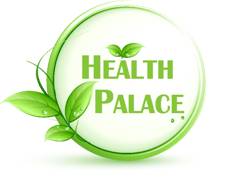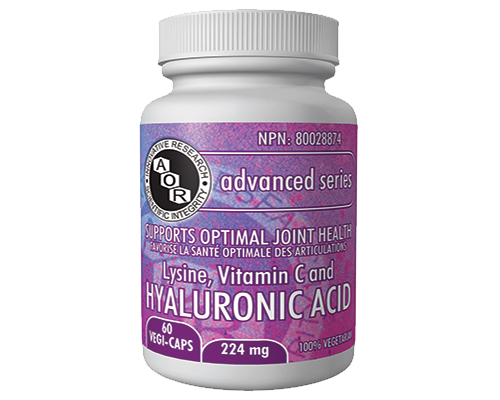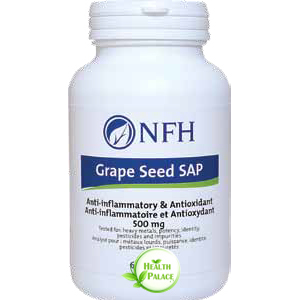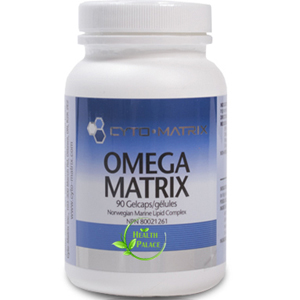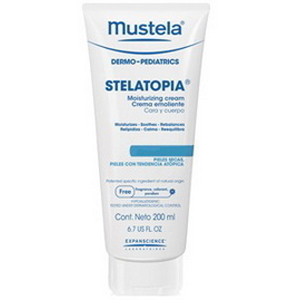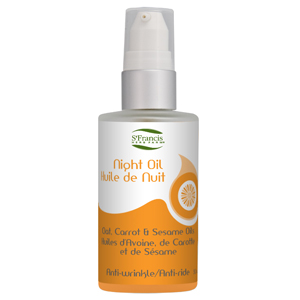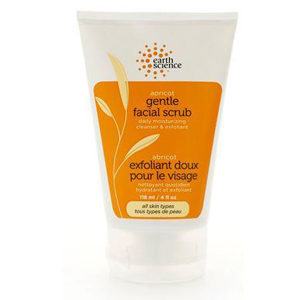How to Hydrate Dry Skin Naturally? | Natural Dry Skin Remedies
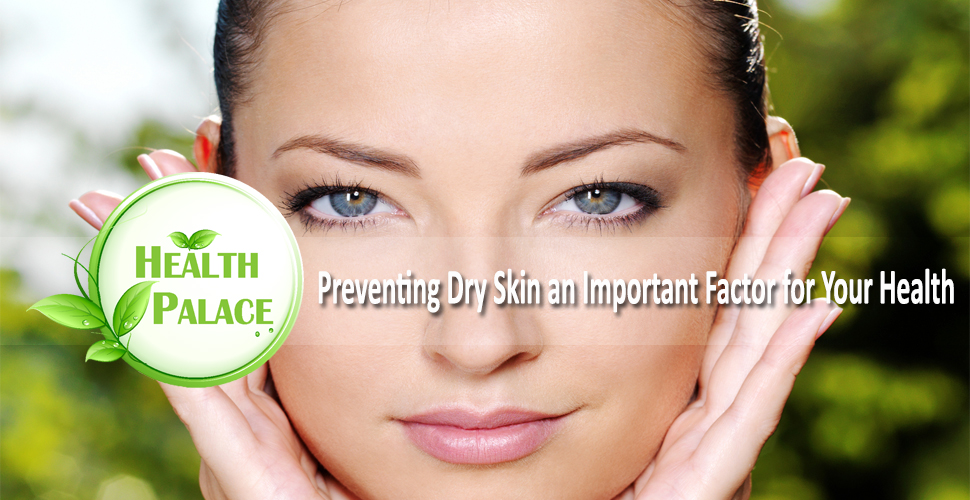
How Does Dry Skin Affect Your Health
Skin in the largest human organ. Skin represents 15 % the body mass with approximately two square meters of surface which is both protective and permeable. Skin is consists of multilayer tissue separating the body from the environment. Skin is responsible for many important functions including: temperature regulation by both providing insulation and via perspiration, water transport, sensations like touch, heath and cold, and protection by providing a barrier against external elements such as micro organisms, toxins, and injuries. Skin permeability allows the absorption of certain medicines as well as harmful chemicals which can alter the skin performance.
Skin characteristics such as its thickness, hydration, elasticity, PH, mechanical resistance and pigmentation vary on different parts of the body and affected by skin type, lifestyle, body mass index, certain health conditions, environment, age, ethnicity, and gender. Skin characteristics are dependent on each other and alteration in one impacts others and overall functions of the skin.
Skin
hydration is one of its main characteristics responsible for skin homeostasis.
Any deviation from normal hydration level causes significant changes in human
skin functions and properties.
Major causes of dry skin include ageing, bad nutrition, environment, exposure to harmful substances, toxins, smoking, high alcohol consumption, certain diseases or health conditions such as diabetes and hypothyroidism, certain drugs, sun damage, wrong skin care or no skin care.
A lower hydration level results in a lower elasticity of the skin, speeds skin aging and wrinkle creation, increases surface roughness, lowers its mechanical resistance. Dry skin is more susceptible to skin diseases, redness, itchiness, flakiness, irritation, and other problems. In addition, irritated skin has more difficulty to keep adequate hydration level leading to even drier or more severe skin conditions, if untreated.
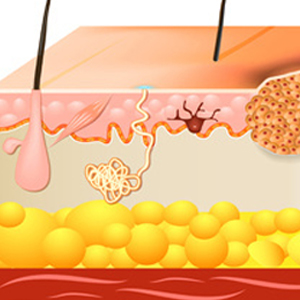
Skin structure:
Skin consists of three main structural layers. These three layers from the inside to the outside include; the hypodermis, the dermis and the epidermis. The epidermis contains four different sub-layers of the stratum corneum (SC), stratum granulosum, stratum spi-nosum and stratum basale.
The barrier function of the skin is mainly provided by the outermost layer of the epidermis, the SC. The SC contains corneocytes that are embedded in a continuous double layered lipid matrix. This lipid layers are formed mainly from ceramides, free fatty acids and cholesterol. Depletion or disturbance of SC lipids alters barrier function of the skin; and, conversely, skin diseases such as psoriasis and atopic dermatitis are associated with the depletion of these SC lipids.
Epidermis structure also consists of a curtail protein called Filaggrin. Filaggrin is important for the formation of the corneocytes and generation of their intracellular metabolites, which contribute to SC hydration and pH. The levels of filaggrin and its degradation is influenced by the filaggrin genotype, by inflammation and exogenous factors. Filaggrin deficiency is observed in patients with atopic dermatitis regardless of their genomic status, suggesting lack of filaggrin as a key factor in this skin condition.
Impairment in the skin barrier function is associated with damaged and diseased skin. Skin barrier function is measured by parameters such as Trans Epidermal Water Loss( TEWL), SC hydration, Sebum content and PH.
How does skin get dehydrated?
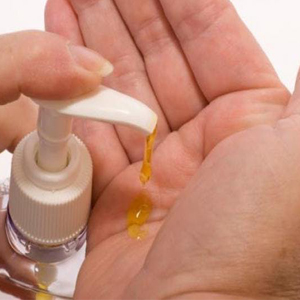
Different skin conditions or disease, aging, environmental factors, exposure to internal and external pollutants and chemicals, diet, mood, and sleep, certain medicines, etc... all contribute to impairment of the skin barrier function in different ways.
Dry skin is usually accompanied with itching. Because of disturbance in skin barrier function,the sensory nerves in the lower layer of the skin are directly subjected to the external stimuli resulting in burning and itching sensations. Dry skin decreases a person’s quality of life because of the discomfort associated with tight and dry skin.
Skin naturally is in constant contact with various substances that are in the environment or applied on to the skin surface deliberately. Because of the skin barrier function only certain medicines with specific size and specific mechanism can get absorbed. Skin Dehydration causes the surface to fracture and let through the larger particles. For example, skin in the eczema condition is more permeable, therefore; substances that usually should not penetrate and are not irritant to the normal skin, become irritant and inflammatory further exacerbating the skin condition.
Exposure to the environmental pollutants, chemicals, cleaning detergents, and alcohol cause extraction of all classes of lipids from the SC layer leading to skin damage, chapped skin, scaly skin and barrier disruption. Other chemicals such as preservatives, and fragrances cause allergic reactions and inflammation in skin. Also Changing seasons causes variations in Ceramide Lipids ratio, In summer some Ceramides are higher while it quickly deplete during fall and winter.
Aging, mood, and sleep are found to affect the lipid content of the skin. Studies suggest skin lipids decrease 10-15 % every decades after the age of 20. A study of the skin barrier function in menopausal women shows a significant reduction in sebum production, while an increase in skin surface pH.
Also sleep disturbance and stress are found to alter the skin production of inflammatory and immune compounds and exacerbate skin conditions.
Essentail fatty acids are part of the skin lipids profile and are precursor to the synthesis of other skin lipids like ceramides. Deficiency in EFAs causes the depletion of skin lipids compromising barrier function, contributing to skin dryness, and other skin conditions.
Sportive activities are shown to affect skin physiology, hydration, sebum content and PH. Study of 60 adult men and women volunteers found 45 minutes of endurance cardio exercise caused an increase in skin hydration, PH, and lipid content of the skin surface, while a decrease in sebum content. Based on the results, the study further suggests that sportive activity which is accompanied by significant changes of skin physiology could stress the barrier function of the skin. The impaired skin barrier may also be the reason for some reported sports-related dermatoses.
Solutions for dry skin conditions:
Studies suggest that replenishing lipids or enhancing their synthesis in the SC can be used to treat affected, aged or diseased skin. However It is important mention that different skin conditions and diseases impact the lipid profile of the SC in unique ways; therefore, types of fats used for their treatments should be tailored to the specific deficiency or disturbance, as altering unaffected SC lipids might result in a further disruption in barrier function of the skin.
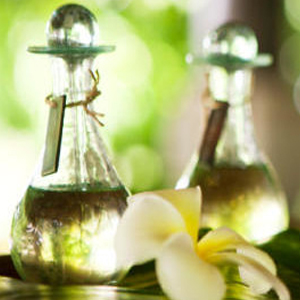
Topical therapy with natural plant oils is common worldwide. Natural plant oils are easily accessible and relatively inexpensive for skin care purposes. Plus, many natural oils contain specific compounds with antimicrobial, antioxidant, anti-inflammatory, and anti-itch properties, making them attractive for treating inflammatory dermatitis associated with skin-barrier disruption. Each oil contains different ratios of essential fatty acids which play a major role in skin barrier repair. Oils with a higher linoleic acid to oleic acid ratio have better barrier repair potential, whereas oils with higher amounts of irritating oleic acid may cause a severe damage to skin-barrier function.
The method of processing natural oils and refinement is important when it comes to selecting oil for skin care. Cold pressing is the preferred method of oil extraction; also, chemical-free process preserves beneficial lipids and limits irritating by-products.
Sunflower seed oil is one of the oils rich in linoleic acid. 2 weeks of cutaneous application of sunflower-seed oil in participants showed an increase in the level of linoleic acid in epidermal layer, significantly lower rate of transepidermal water loss, and the scaly lesions disappeared. While such changes were not observed with cutaneous application of olive oil, rich in oleic acid.
Studies suggest 8 weeks topical application of Medium Chain Fatty Acids in individuals with atopic dermatitis to be effective by improving skin barrier, reducing inflammation, moisture loss and therefore alleviating dry skin. MCFAs react with the lipases of the skin micro flora and turned into free fatty acids, which penetrate the dermis where they reduce cellular inflammation and improve skin barrier.
Topical colloidal oat, and oat oil extracts application exhibit direct anti-oxidant and anti-inflammatory activities explaining oat based lotions mechanism of action for its dermatological benefits. Patient treated by oat extract show reduction in skin dryness, scaling, roughness and intensity of itch. Oat extract and oat lipids act via modulating production of the inflammatory compounds by epidermal keratinocytes, and inducing differentiation and ceramide synthesis in keratinocytes, which can collectively improve skin barrier function.
Research on analysing the effects of oral supplementation with omega 3 fatty acids on the skin indicates positive results. An animal study showed diet rich in omega 3 fatty acids within 90 days, improved the ratio of the omega3 to omega 6 in the skin, increase protection against the dry skin stimuli, reduced scratching, and speeded up the recovery. Concluding long term supplementation with omega 3 fatty acids might restore skin structure and function.
Case studies of the Statis Dermatitis found oral intake of omega 3 fatty acids provides remarkable results by healing the lesions within 10-12 weeks, while in fact the usual treatments and various topical ointments over years showed no improvements. Results from this case studies have been mainly associated with the ability of omega 3 fatty acids to improve the blood flow, promote blood circulation, and reduce inflammation.
Hyaluronan which is also called Hyaluronic Acid (HA) is found in many tissues of the body and it is essential to maintain moisture in the skin tissues. Skin contains approximately half the body’s HA. In the skin, HA is synthesized by specialised skin cells in epidrem and dermis layers of the skin. HA is a highly viscose molecule and retains moisture so it is responsible for regulating water balance and maintaining the cell structure in dermis. In fact HA is necessary for healthy skin.
Based on findings in a randomized, double-blind, placebo-controlled clinical study ingested HA increases skin moisture and improves treatment results for patients with dry skin. In this study Individuals with chronically dry and rough skin received 120mg -240 mg of HA daily for 6 weeks; and results evaluated by dermatologists indicated significant improvement in face and body's skin moisture, PH, wrinkles, and texture. Taking HA also showed to reduce itching and dryness in patient with dermatitis.
Further studies verified that the beneficial effects of ingesting HA remains the same even if HA was obtained from different sources, suggesting the HA is absorbed from intestine and reached to the skin via blood and lymphatic system. The aforementioned reports suggest that both low- and high molecular weight HAs reach to the skin and by affecting the fibroblast cells promote further HA synthesis and cell proliferation, which improves skin moisture.
Taking HA has been proven to be safe in human clinical trials, and showed to affect skin cells and improve dry skin physiologically. Ingested HA contributes to the increased synthesis of HA and promotes cell proliferation in fibroblasts. These effects show that ingestion of HA moisturizes the skin and is expected to improve the quality of life for people who suffer from dry skin conditions.

Phenolic Compounds are one of the most studied antioxidants with anti microbial, anti-inflammatory and/ or anti aging properties, and can pass through the skin
barrier. Grapes contain variety of active compounds, including organic acids,
oils and polyphenols. Grape is one of the richest sources of polyphenols
including flavonoids,
resveratrol,
and
proanthocyanidins.
Ultraviolet light produces reactive oxygen (free radicals) in skin accelerating aging by damaging DNA, proteins, lipids, and other cellular constituents. Phenolic compounds of the grape are found to provide photo protection properties against UV radiation, and have been considered for natural cosmetic formulations. Topical application of resveratrol to SKH-1 hairless mice before exposure to UVB rays resulted in significant inhibitions of skin edema, inflammation and lipid peroxidation in the skin caused by UVB. Resveratrol and the flavonoid quercetin reduce the responses of epidermal keratinocytes exposed to physiologically relevant dose of solar-simulated UV rays.
Skin has a complex antioxidant system to protect it from oxidative damage. This antioxidant system include ascorbic acid, tocopherol, ubiquinol, glutathione, catalase, superoxide dismutase, and more. However, the natural antioxidant pool is compromised by the oxidative stress caused by UV radiation and pollutants. Formation of free radicals leads to loss of cellular integrity, modification of DNA and abnormal expression of cellular genes which is responsible for the extracellular matrix protein degradation, causing wrinkle formation and metastases, as well as peroxidation of fatty acids within the phospholipid structure of the cell membrane.
Dietary ingestion of antioxidants is suggested to slow down skin aging by preventing depletion of antioxidants in the skin. Grape-based antioxidants are found to be efficient in improving premature aging, and delaying photoaging. Taking Quercetin shows to protects human keratinocytes from UVA damage mainly by increasing the intracellular antioxidant content.
New studies on dietary supplements containing grape seed extracts and other ingredients such as extracts from white tea, tomato, and chamomile, zinc, vitamins C and E, have confirmed their benefits on healthy post-menopausal females compared to placebo for improving face condition, structure and firmness.
Animal studies found the oral administration of 1% of a grape seed extract (containing 89.3% proanthocyanidins) can reduce skin pigmentation caused by UV exposure within a week.
Vitis vinifera (grape) seed extract is well known as an antioxidant with other beneficial properties such as, antifungal, antimicrobial, sunscreen and as skin-conditioning agent. Grape-derived ingredients are shown to be safe and did not produce systemic toxicity in long-term (up to 12 months) repeated dose studies; grape-derived ingredients do not appear to be irritants or sensitizers and according to the research grape derived ingredients are safe in the present concentrations.
Healthy diet and adequate body weight is proven to slow the skin-aging process, decrease the risk of skin disorders and accelerate the wound-healing process. Also, the avoidance of excessive UV exposure, and other pollutant allows maintain better skin health.
Skin acts as a barrier that protects the body from the environment. However, certain substances can penetrate into deeper layers of the skin and even be absorbed into the bloodstream. Because of the diversity of skin properties and the complex relationship between skin permeability and its other characteristics, individualized factors have to be taken into consideration in treating skin conditions.
Epidermal permeability barrier function plays a vital role in development of skin conditions. A compromised permeability barrier alone not only induces cutaneous inflammation, but also causes an increase in allergen penetration and colonization of pathogens. Improving skin barrier function prevents both inflammation and microbial infections.
Over the past decade due to technology advancements, more information on the structure of the skin layers and precisely the function stratum corneum (SC), the outermost layer of the epidermis has become available. SC cells (corneocytes) play an important role in protecting the skin against destruction and environmental challenges by maintaining optimal level of hydration which is depending on several factors including intercellular lipids, trans-dermal water loss control, and production of natural moisturizing proteins known as filaggrin. These functions are easily compromised in everyday life by various causes resulting in dry and flaky skin conditions, irritations, rashes, burns, or other health problems.
Related articles:
- Surprising therapeutic and healing benefits of essential oils
- How to Maintain and Restore Healthy Blood Lipids Level
- Natural Alternatives To Manage Depression & Winter Blues
Articles and products featured by Health Palace are collected from a variety of sources and are provided as a service by Health Palace. These newsletters, while of potential interest to readers, do not necessarily represent the opinions nor constitute the advice of Health Palace. Presented materials are only for information purposes and do not intent to treat, cure, or prevent any disease.
Select References:
1.Dabrowska AK, Rotaru GM, Derler S, et al. Materials used to simulate physical properties of human skin. Skin Res Technol. 2016;22:3-14.
2.Firooz A, Sadr B, Babakoohi S, et al. Variation of biophysical parameters of the skin with age, gender, and body region. Sci World J. 2012;2012:1-5.
3.Rawlings AV. Ethnic skin types: are there differences in skin structure and function? 1. Int J Cosmet Sci. 2006;28:79-93.
4.Dayan N. Skin Aging Handbook. NewYork: William Andrew; 2008.
5.Diridollou S, de Rigal J, Querleux B, Leroy F, Barbosa VH. Comparative study of the hydration of the stratum corneum between four ethnic groups: influence of age. Int J Dermatol. 2007;46:11-14.
6.Man MQ, Xin SJ, Song SP, et al. Variation of skin surface pH, sebum content and stratum corneum hydration with age and gender in a large chinese population. Skin Pharmacol Physi. 2009;22:190-199.
7.Gilchrest BA. Skin aging and photoaging: an overview. J Am Acad Dermatol. 1989;21:610-613.
8.Sandby-Moller J, Poulsen T, Wulf HC. Epidermal thickness at different body sites: relationship to age, gender, pigmentation, blood content, skin type and smoking habits. Acta Derm-Venereol. 2003;83:410-413.
9.Primavera G, Berardesca E. 11 transepidermal water loss and racial differences. In Howard M, Peter E, eds. Bioengineering of the Skin: Water and Stratum Corneum. Boca Raton, FL: CRC press; 2005:129.
10.Wilhelm K-P, Cua AB, Maibach HI. Skin aging: effect on transepidermal water loss, stratum corneum hydration, skin surface pH, and casual sebum content. Arch Dermatol. 1991;127:1806-1809.
11.Agache P, Humber P. Measuring the Skin: Non-Invasive Investigation, Physiology, Normal Constants. ed Philipp M. Berlin: Springer, 2004.
12.Dąbrowska AK, Adlhart C, Spano F, et al. In vivo confirmation of hydration-induced changes in human-skin thickness, roughness and interaction with the environment. Biointerphases. 2016;11:031015.
13.Egawa M, Oguri M, Kuwahara T, Takahashi M. Effect of exposure of human skin to a dry environment. Skin Res Technol. 2002;8:212-218.
14.Taylor NA, Machado-Moreira CA. Regional variations in transepidermal water loss, eccrine sweat gland density, sweat secretion rates and electrolyte composition in resting and exercising humans. Extrem Physiol Med. 2013;2:1.
15.Darvin ME, Patzelt A, Knorr F, Blume-Peytavi U, Sterry W, Lademann J. One-year study on the variation of carotenoid antioxidant substances in living human skin: influence of dietary supplementation and stress factors. J Biomed Optics 2008;13:044028-044029.
16.Purba MB, Kouris-Blazos A, Wattanapenpaiboon N, et al. Skin wrinkling: can food make a difference? J Am Coll Nutr. 2001;20:71-80.
17.Cosgrove MC, Franco OH, Granger SP, Murray PG, Mayes AE. Dietary nutrient intakes and skin-aging appearance among middle-aged American women. Am J Clin Nutr. 2007;86:1225-1231.
18.Löffler H, Aramaki J, Effendy I. The influence of body mass index on skin susceptibility to sodium lauryl sulphate. Skin Res Technol. 2002;8:19-22.
19.Riefkohl R, Wolfe JA, Cox EB, McCarty KS Jr. Association between cutaneous occlusive vascular disease, cigarette smoking, and skin slough after rhytidectomy. Plast Reconstr Surg. 1986;77:592-595.
20.Yosipovitch G, DeVore A, Dawn A. Obesity and the skin: skin physiology and skin manifestations of obesity. J Am Acad Dermatol. 2007;56:901-916.
21.Verdier-Sévrain S, Bonte F. Skin hydration: a review on its molecular mechanisms. J Cosmet Dermatol. 2007;6:75-82.
22.Silva CL, Topgaard D, Kocherbitov V, Sousa J, Pais AA, Sparr E. Stratum corneum hydration: phase transformations and mobility in stratum corneum, extracted lipids and isolated corneocytes. Biochim Biophys Acta. 2007;1768:2647-2659.
23.Tupker R, Pinnagoda J, Coenraads P, Nater J. Susceptibility to irritants: role of barrier function, skin dryness and history of atopic dermatitis. Brit J Dermatol. 1990;123:199-205.
24.Egawa M, Tagami H. Comparison of the depth profiles of water and water-binding substances in the stratum corneum determined in vivo by Raman spectroscopy between the cheek and volar forearm skin: effects of age, seasonal changes and artificial forced hydration. Brit J Dermatol. 2008;158:251-260.
25.Elias PM. Stratum corneum defensive functions: an integrated view. J Invest Dermatol. 2005;125:183-200.
26.Jean Watkins Retired GP. Dry skin: a common but treatable condition;Https://doi.org/10.12968/nrec.2014.16.9.508,aug....
27.http://onlinelibrary.wiley.com//doi/10.1111/ijd/12339/full
28.Johnson AW. Overview: fundamental skin care – protecting the barrier. Dermatol Ther2004; 17: 1–5.
29.Chamlin SL, Frieden IJ, Fowler A, et al. Ceramide-dominant, barrier-repair lipids improve childhood atopic dermatitis . Arch Dermatol2001; 137: 1110–1112.
30.Chamlin SL, Kao J, Frieden IJ, et al. Ceramide-dominant barrier repair lipids alleviate childhood atopic dermatitis: changes in barrier function provide a sensitive indicator of disease activity . J Am Acad Dermatol2002; 47: 198–208.
31.Agero AL, Verallo-Rowell VM . A randomized double-blind controlled trial comparing extra-virgin coconut oil with mineral oil as a moisturizer for mild to moderate xerosis . Dermatitis2004; 15: 109–116.
32.Sugarman JL, Parish LC. Efficacy of a lipid-based barrier repair formulation in moderate to severe pediatric atopic dermatitis . J Drugs Dermatol2009; 8: 1106–1111.
33.Schliemann-Willers S, Wigger-Alberti W, et al. Natural vegetable fats in the prevention of irritant contact dermatitis . Contact Dermatitis2002; 46: 6–12.
34.Cooke A, Cork MJ, Victor S, Campbell M, Danby S, Chittock J, et al. Olive Oil, sunflower oil or no oil for baby dry skin or massage: a pilot, assessor-blinded, randomized controlled trial (the Oil in Baby SkincaRE [OBSeRvE] Study). Acta Derm Venereol. 2016;96(3):323–30.
35.Eichenfield LF, McCollum A, Msika P. The benefits of sunflower oleodistillate (SOD) in pediatric dermatology. Pediatr Dermatol. 2009;26(6):669–75.
36.Kanti V, Grande C, Stroux A, Buhrer C, Blume-Peytavi U, Garcia Bartels N. Influence of sunflower seed oil on the skin barrier function of preterm infants: a randomized controlled trial. Dermatology (Basel, Switzerland). 2014;229(3):230–9.
37.Prottey C, Hartop PJ, Press M. Correction of the cutaneous manifestations of essential fatty acid deficiency in man by application of sunflower-seed oil to the skin. J Invest Dermatol. 1975;64(4):228–34.
38.Huang CB, Alimova Y, Myers TM, Ebersole JL. Short- and medium-chain fatty acids exhibit antimicrobial activity for oral microorganisms. Arch Oral Biol. 2011;56(7):650–4.
39.Nakatsuji T, Kao MC, Fang JY, Zouboulis CC, Zhang L, Gallo RL, et al. Antimicrobial property of lauric acid against Propionibacterium acnes: its therapeutic potential for inflammatory acne vulgaris. J Invest Dermatol. 2009;129(10):2480–8.
40.Evangelista MT, Abad-Casintahan F, Lopez-Villafuerte L. The effect of topical virgin coconut oil on SCORAD index, transepidermal water loss, and skin capacitance in mild to moderate pediatric atopic dermatitis: a randomized, double-blind, clinical trial. Int J Dermatol. 2014;53(1):100–8.
41.DebMandal M, Mandal S. Coconut (Cocos nucifera L.: Arecaceae): in health promotion and disease prevention. Asian Pac J Trop Med. 2011;4(3):241–7.
42.Stamates GN, de Sterke J, Hauser M, von Stetten O, van der Pol A. Lipid uptake and skin occlusion following topical application of oils on adult and infant skin. J Dermatol Sci. 2008;50(2):135–42.
43.Sur R, Nigam A, Grote D, Liebel F, Southall MD. Avenanthramides, polyphenols from oats, exhibit anti-inflammatory and anti-itch activity. Arch Dermatol Res. 2008;300(10):569–74.
44.Reynertson KA, Garay M, Nebus J, Chon S, Kaur S, Mahmood K, et al. Anti-inflammatory activities of colloidal oatmeal (Avena sativa) contribute to the effectiveness of oats in treatment of itch associated with dry, irritated skin. J Drugs Dermatol. 2015;14(1):43–8.
45.Chon SH, Tannahill R, Yao X, Southall MD, Pappas A. Keratinocyte differentiation and upregulation of ceramide synthesis induced by an oat lipid extract via the activation of PPAR pathways. Exp Dermatol. 2015;24(4):290–5.
46.Boguniewicz M, Leung DY. Atopic dermatitis: a disease of altered skin barrier and immune dysregulation. Immunol Rev. 2011;242(1):233–46.
47.Doucet J, Potter A, Baltenneck C, Domanov YA. Micron-scale assessment of molecular lipid organization in human stratum corneum using microprobe X-ray diffraction. J Lipid Res. 2014;55(11):2380–8.
48.Weerheim A, Ponec M. Determination of stratum corneum lipid profile by tape stripping in combination with high-performance thin-layer chromatography. Arch Dermatol Res. 2001;293(4):191–9.
49.Harding CR. The stratum corneum: structure and function in health and disease. Dermatol Ther. 2004;17(Suppl 1):6–15.
50.Marino C. Skin physiology, irritants, dry skin and moisturizers. Washington State Department of Labor and Industries; 2006.
51.Hoste E, Kemperman P, Devos M, Denecker G, Kezic S, Yau N, et al. Caspase-14 is required for filaggrin degradation to natural moisturizing factors in the skin. J Invest Dermatol. 2011;131(11):2233–41.
52.Loden M. Role of topical emollients and moisturizers in the treatment of dry skin barrier disorders. Am J Clin Dermatol. 2003;4(11):771–88.
53.Ghadially R, Brown BE, Sequeira-Martin SM, Feingold KR, Elias PM. The aged epidermal permeability barrier. Structural, functional, and lipid biochemical abnormalities in humans and a senescent murine model. J Clin Investig. 1995;95(5):2281–90.
54.Kezic S, Jakasa I. Filaggrin and skin barrier function. Curr Probl Dermatol. 2016;49:1–7.
55.Osawa R, Akiyama M, Shimizu H. Filaggrin gene defects and the risk of developing allergic disorders. Allergol Int. 2011;60(1):1–9.
56.Elias PM, Brown BE, Ziboh VA. The permeability barrier in essential fatty acid deficiency: evidence for a direct role for linoleic acid in barrier function. J Invest Dermatol. 1980;74(4):230–3.
57.Journal Francais D'ophtalmologie [01 Oct 2006, 29(8):868-873];.http://europemc.orgabstract/med/17075501
58.Oral supplementation with fish oil reduces dryness and pruritus in the acetone-induced dry skin rat model; Sciencedirect.com/science/article/pii/S0923181115300207;https://doi.org/10.1016/j.jdermsci.2015.06.015
59.New Therapy Using Omega-3-Acid Ethyl Esters for Decubitus Ulcers and Stasis Dermatitis: A Case Report, http://www.ncbi.nlm.nih.gov/pmc/articles/pmc4341....
60.Chinatsu Kawada, Takushi Yoshida, Hideto Yoshida, Ryosuke Matsuoka Emailauthor, Wakako Sakamoto, Wataru Odanaka, Toshihide Sato, Takeshi Yamasaki, Tomoyuki Kanemitsu, Yasunobu Masuda and Osamu Urushibata; Nutrition Journal 201413:70.
61.https://doi.org/10.1186/1475-2891-13-70Kawada et al.; licensee BioMed Central Ltd. 2014.
62.Causes of epidermal filaggrin reduction and their role in the pathogenesis of atopic dermatitis;https://doi.org/10.1016/j.jaci.2014.06.014
63.http://onlinelibrary.wiley.com/doi/10.1111/ijd/12....
64.Influence of sportive activity on skin barrier function: a quantitative evaluation of 60 athletes 13 March 2013, DOI: 10.1111/j.1365-4632.2012.05852.x;http://onlinelibrary.wiley.com/doi/10.1111/j.1365....
65.Delmas, D. Resveratrol: Sources, Production and Health Benefits; Nova Science Publishers Inc.: Hauppauge, NY, USA, 2013.
66.Pezzuto, J.M.; Kondratyuk, T.P.; Ogas, T. Resveratrol derivatives: A patent review (2009–2012). Expert Opin. Ther. Pat. 2013, 23, 1529–1546.
67.Balasundram, N.; Sundram, K.; Samman, S. Phenolic compounds in plants and agri-industrial by-products: Antioxidant activity, occurrence, and potential uses. Food Chem. 2006, 99, 191–203.
68.Reis Giada, M.L. Food phenolic compounds: Main classes, sources and their antioxidant power. In Oxidative Stress and Chronic Degenerative Diseases—A Role for Antioxidants; Morales González, J.A., Ed.; InTech Publisher: Rijeka, Croatia, 2013; pp. 87–112.
69.Teissedre, P.L.; Chervin, C. Grape. In Health-Promoting Properties of Fruits and Vegetables; Terry, L.A., Ed.; CABI Press: Oxford, UK, 2011; Volume 487, pp. 154–170.
70.Saewan, N.; Jimtaisong, A. Natural products as photoprotection. J. Cosmet. Dermatol. 2015, 14, 47–63.
71.Furiga, A.; Lonvaud-Funel, A.; Badet, C. In vitro study of antioxidant capacity and antibacterial activity on oral anaerobes of a grape seed extract. Food Chem. 2009, 113, 1037–1040.
72.Georgiev, V.; Ananga, A.; Tsolova, V. Recent advances and uses of grape flavonoids as nutraceuticals. Nutrients 2014, 6, 391–415.
73.Cornacchione, S.; Sadick, N.S.; Neveu, M.; Talbourdet, S.; Lazou, K.; Viron, C.; Renimel, I.; de Quéral, D.; Kurfurst, R.; Schnebert, S.; et al. In vivo skin antioxidant effect of a new combination based on a specific Vitis vinifera shoot extract and a biotechnological extract. J. Drugs Dermatol. 2007, 6, 8–13.
74.Lorencini, M.; Brohem, C.A.; Dieamant, G.C.; Zanchin, N.I.T.; Maibach, H.I. Active ingredients against human epidermal aging. Ageing Res. Rev. 2014, 15, 100–115.
75.Ratz-Lyko, A.; Arct, J.; Majewski, S.; Pytkowska, K. Influence of polyphenols on the physiological processes in the skin. Phytother. Res. 2015, 29, 509–517.
76.Skovgaard, G.R.L.; Jensen, A.S.; Sigler, M.L. Effect of a novel dietary supplement on skin aging in post-menopausal women. Eur. J. Clin. Nutr. 2006, 60, 1201–1206.
77.Bernard, P.; Berthon, J.Y. Resveratrol: An original mechanism on tyrosinase inhibition. Int. J. Cosmet. Sci. 2000, 22, 219–226.
78.Friedman, M. Antibacterial, antiviral, and antifungal properties of wines and winery byproducts in relation to their flavonoid content. J. Agric. Food Chem. 2014, 62, 6025–6042.
79.Korkina, L.; de Luca, C.; Pastore, S. Plant polyphenols and human skin: Friends or foes. Ann. N. Y. Acad. Sci. 2012, 1259, 77–86.
80.Morgan, C.; Nigam, Y. Naturally derived factors and their role in the promotion of angiogenesis for the healing of chronic wounds. Angiogenesis 2013, 16, 493–502.
81.Park, J.; Park, J.H.; Suh, H.J.; Lee, I.C.; Koh, J.; Boo, Y.C. Effects of resveratrol, oxyresveratrol, and their acetylated derivatives on cellular melanogenesis. Arch. Dermatol. Res. 2014, 306, 475–487.
82.Fiume, M.M.; Bergfeld, W.F.; Belsito, D.V.; Hill, R.A.; Klaassen, C.D.; Liebler, D.C.; Marks, J.G.; Shank, R.C.; Slaga, T.J.; Snyder, P.W.; et al. Safety assessment of Vitis vinifera (Grape)-derived ingredients as used in cosmetics. Int. J. Toxicol. 2014, 33, 48–83.
83.Li AN, Li S, Zhang YJ, Xu XR, Chen YM, Li HB. Resources and biological activities of natural polyphenols. Nutrients. 2014;6(12):6020–47.
84.María Luisa Soto,Elena Falqué, Herminia Domínguez; Relevance of Natural Phenolics from Grape and Derivative Products in the Formulation of Cosmetics;http://www.mdpi.com/2079-9284/2/3/259/htm; Cosmetics 2015, 2(3), 259-276; doi: 10.3390/cosmetics2030259
|
Aor Hyaluronic Acid With Lysine and Vitamin C 60 Veg Capsules |
NFH Grape Seed SAP 60 Veg Capsules |
CytoMatrix OmegaMatrix 90 Softgels |
|
Lysine, Vitamin C and Hyaluronic Acid contains ingredients that help in the development and maintenance of bones and cartilage, as well as ... |
Studies have demonstrated that GSE can reduce inflammation by inhibiting the formation of inflammatory ... |
Essential Fatty Acids This formula is biologically enhanced with GLA from its best source ... |
|
|
|
|
|
|
|
|
|
Restores the skin’s barrier function. Soothes itching and irritation. Helps re-balance the skin flora
|
Night Oil contains very high levels of important antioxidants, including several forms of vitaminE. It is rich in fatty acids and natural emollients ....Read More |
More than just a moisturizer, Ceramide Healthy Skin Facial Lotion helps repair dry skin and alleviate the causes of dryness |

|

|

|
Recent Posts
-
Maintain A Healthy Heart Rhythm With Integrative Medicine
Maintain A Healthy Heart Rhythm With Integrative Medicine;Usually, abnormal heart rate or arrhythmi …4th Feb 2021 -
How To Protect Against COVID-19
Coronaviruses are a large group of viruses that cause many common human and animal infections. In hu …30th Jun 2020 -
How to Prevent Gallstones from Forming? | Natural Supplements for Gallstones
How To Prevent Gallstone Formation?Gallstones are hard deposits made of cholesterol or bilirubin f …4th Mar 2020
